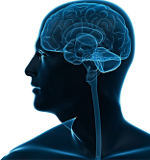March 11, 2021
Studies in several countries, including Denmark, have found that between 10 and 30% of patients diagnosed with Concussion suffer from long-term symptoms. These long term consequences were recognized by the American Academy of Neurology in an important study published in July, 2020 and featured in this blog (“a single mild to moderate TBI may cause long-term neuroaxonal degeneration and astrogliosis/ activation.”)
Having recognized the potential for serious long-term consequences, researchers have begun to assess the economic impact of concussion. A Danish study recently published in BMJ Open concluded that concussions have a large and long-lasting impact on the salary and employment of working class adults on a national scale. Read More
July 16, 2013
On June 28, 2013 a Chittenden County Vermont jury returned a $43.1 million dollar verdict in favor Dzemila Heco, a 51 year old woman who suffered a C4-C5 spinal cord injury when her 1999 Dodge Neon was struck from behind at 35 miles per hour by another car while waiting at a red light. Read More
May 10, 2013
When you or a close family member suffers a traumatic brain injury, your first priority is to obtain the best medical care. But once the injury is stabilized you’ll need to find the funds to pay for not only initial treatment but also for future treatment, recovery and rehabilitation. Read More
May 9, 2013
We live in a world of “show me” juries, programmed to believe that most people bringing personal injury claims to trial are trying to get something for nothing. They want to be convincingly shown that a real injury exists—that the injured person can prove a brain injury or other debilitating condition.
Proving a Mild Traumatic Brain Injury to a Jury
For example, some brain injuries produce bleeding in the brain that clearly shows up on conventional diagnostic images like CT scans—computerized tomography that combines a series of X-ray views taken from many different angles and processed by a computer to create cross-sectional images of the bones and soft tissues inside your body—and/or MRIs—magnetic resonance imaging that uses a magnetic field and radio waves to create detailed images of the organs and tissues within your body—or, that produce visible neurological signs like seizures, visual problems, speech problems, or motor problems.
Proving a brain injury to a jury where visible evidence is available is not difficult. However, we know that many mild traumatic brain injuries are “invisible” to these standard tests, yet are serious enough to greatly impact quality of life. In these cases, the challenge is to help the jury understand those long-term consequences, even when the injury is not visible.
Read More
